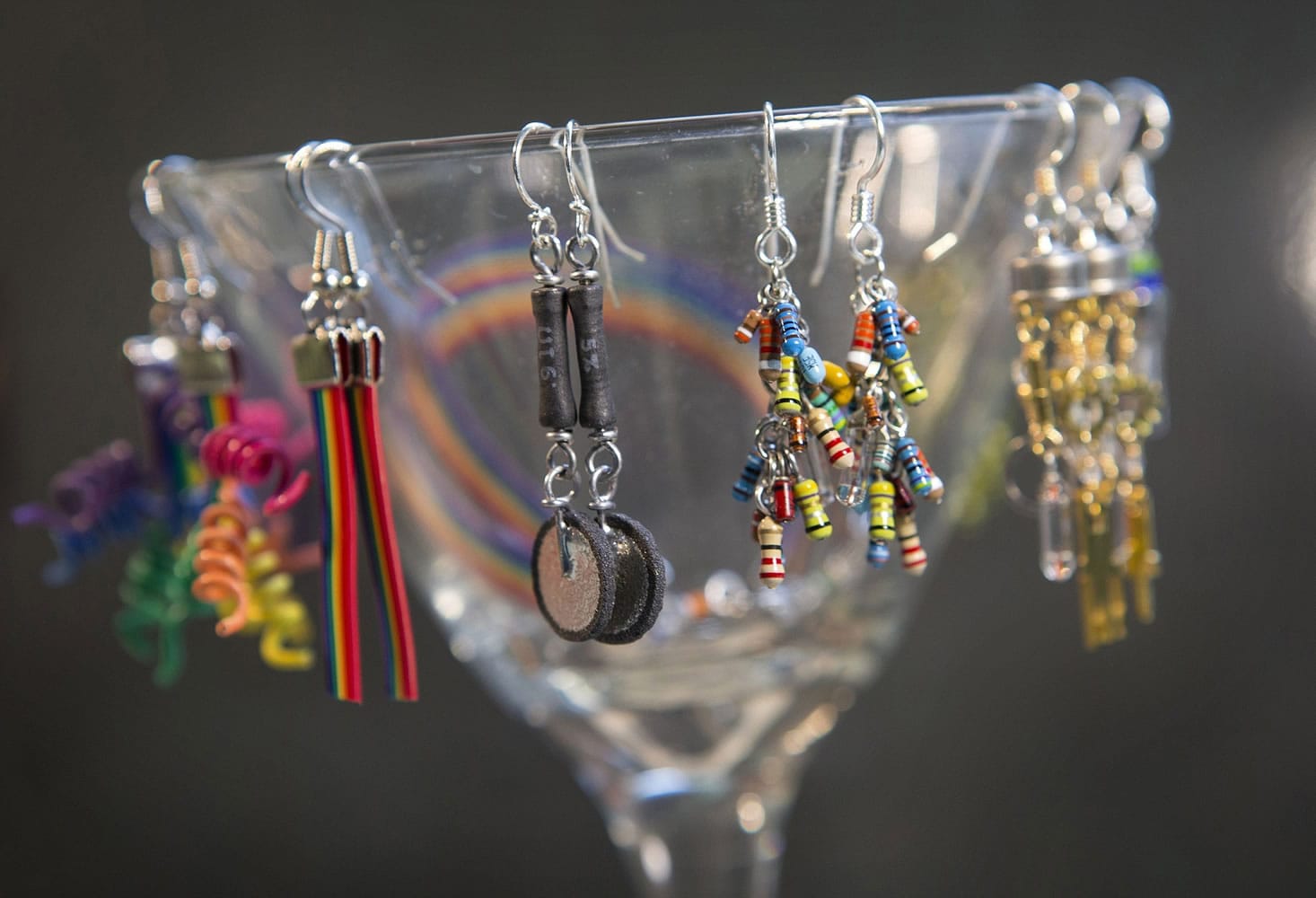Vintage electronic parts become chic jewelry
SEATTLE — Steve Grzadzielewski has more than a million electronics parts lying around his house in West Seattle.
But he’s no engineer — Grzadzielewski and his sister Susan make and sell jewelry made out of vintage electronics parts. Their business, aptly named Transistor Sister, was founded in 1984, and it all started with a broken watch.
“It had all these little components in it, and they were pretty interesting,” said Susan, 56. “And I said, ‘That would make a nice earring.’ I put it through my ear. And then it was Steve. He was like, wow. Electronic jewelry designs.”
The duo began taking apart household items from telephones and calculators to washing machines and microwaves. They realized that the circuit boards they found were more than just functional — they were beautiful.



